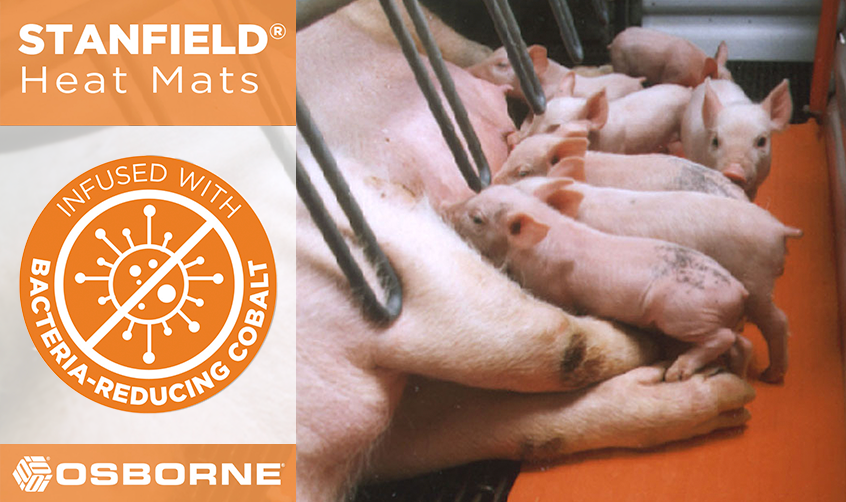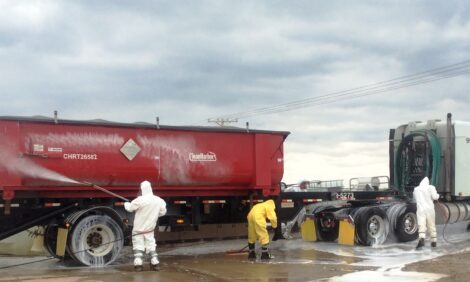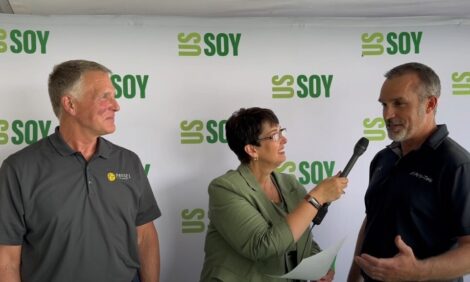



Welfare of Farmed Animals at Slaughter or Killing: Part 1: Red Meat Animals
By the Farm Animal Welfare Council - FAWC was established in 1979. Its terms of reference are to keep under review the welfare of farm animals on agricultural land, at market, in transit and at the place of slaughter; and to advise Great Britain’s Rural Affairs Ministers of any legislative or other changes that may be necessary. The Council has the freedom to consider any topic falling within this remit.
Foreward
Since FAWC last considered the welfare of farmed animals at slaughter in the mid
1980’s, there have been major changes in the structure of farming but perhaps even more
so in the structure of the slaughter industry.
The decline in the number of slaughterhouses noted in our 1985 report has continued.
The year 1995 saw the introduction of the Welfare of Animals (Slaughter or Killing)
Regulations (commonly known as WASK) with, at the same time, the creation of the
Meat Hygiene Service and the requirement for an Official Veterinary Surgeon (OVS) to
be present in all slaughterhouses.
We have seen new technologies introduced for stunning and killing and much new
research that has advanced our understanding of animal welfare during the slaughter
process. Likewise, much has been learned in recent years about design features for
slaughterhouses that can have great benefit for the welfare of the animals being handled
and processed.
Species that were not farmed in large numbers in the 1980’s, such as deer, ostrich and
wild boar, are now being produced for human consumption and deserve special
consideration to assure their welfare at slaughter.
The recent outbreaks of exotic diseases in the UK (Classical Swine Fever in 2000 and Foot and Mouth Disease in 2001) have highlighted the welfare problems involved in slaughtering large numbers of animals over short periods outside the controlled environment of the slaughterhouse. In addition, consumers rightly expect safe meat in the face of a number of zoonotic diseases, such as BSE and E.coli 0157. However, the achievement of these high safety standards must not be at the expense of welfare.
All these issues and many more are addressed in this report and we make a number of
significant recommendations. These include the phasing out of the use of aversive gases
as a means of stunning pigs, the use of improvement notices as enforcement sanctions,
restriction on the presentation of horned cattle at slaughterhouses, the need for a system
of approval for slaughter equipment and the need for periodic re-assessment of the
competence of those holding slaughter licences.
Some of our recommendations can be adopted simply by changes to working practices.
Others will require changes to the legislation. In each case we have tried to make it clear
whose responsibility we believe it is to take the recommended action and what
specifically needs to be done.
We recognise there may be strong reactions to our recommendations with regard to
slaughter of animals without pre-stunning both from the religious groups affected and
from the wider animal welfare community. Our recommendations are based upon our
concern for the welfare of the animals involved. We make no moral judgement. I
sincerely hope that attention is not drawn away from the overall value of the report and the many significant recommendations which we make for the benefit of all animals
which are slaughtered for human consumption.
Dr Judy MacArthur Clark
Chairwoman of FAWC
CONTENTS
|
Chairwoman’s foreword PART I: INTRODUCTION FAWC’s philosophy Specific slaughter issues Remit and methodology PART II: BACKGROUND Structure of the slaughter industry Meat Hygiene Service |
vii 1 1 2 3 5 5 6 |
|
PART III: THE WELFARE ISSUES
1. Design, construction and operation of the slaughterhouse Unloading General Arrival at the slaughterhouse Design of unloading area Inspection of animals Isolation pens, procedures for casualty animals and emergency slaughter |
7 7 7 7 7 8 9 10 |
|
Lairage
General Time spent in the lairage Lairage capacity Lairage layout Lairage floors Noise in the lairage Ventilation in the lairage Provision of feed and water in the lairage Space allowance in the lairage Mixing of livestock in the lairage Showering pigs Field lairages |
10 10 10 11 12 12 13 14 15 16 16 17 17 |
|
2. Handling of animals prior to stunning General Design of pre-slaughter handling systems Handling for identification Handling to fulfil the requirements of the clean livestock policy Handling aids and goads Horned cattle Handling of cattle before stunning Handling and restraint of sheep and pigs before stunning Group stunning pens Restrainer/conveyers Pre-slaughter handling of pigs in gas killing systems |
18 18 18 19 20 21 22 22 23 23 24 25 |
|
3. Stunning and killing General System of approval for stunning/killing equipment Maintenance of equipment Monitoring of stunning Back up systems Gas stunning/killing of pigs Carbon dioxide and alternative gas mixtures Captive-bolt stunning Electrical stunning/killing Head only electrical stunning Tong positions Equipment specification Failsafe systems Electrical stunning/killing systems for cattle |
26 26 26 27 27 28 28 28 29 30 30 30 30 31 31 |
|
4. Slaughter Slaughter without pre-stunning Background Pre-slaughter handling Pain and distress during exsanguination Time to loss of brain responsiveness Bleeding procedures General Stunning to bleeding intervals Bleeding practices Pithing Assessment of unconsciousness |
32 32 32 33 34 35 36 36 37 38 38 38 |
|
5. Mass killing for exotic disease control 6. On-farm slaughter or killing General Casualty and emergency slaughter Private slaughter Mobile slaughterhouses |
39 39 39 40 40 40 |
|
7. Slaughter of deer 8. Slaughter of ostriches 9. Slaughter of wild boar 10. Slaughter of horses 11. Licensing, training and staffing Licensing system Training Staffing Animal Welfare Officers |
41 42 44 45 46 46 48 49 49 |
|
12. Legislation and enforcement Legislation Enforcement Enforcement sanctions Training of enforcement staff Level of veterinary supervision 13. Research, development and technology transfer Summary of recommendations Appendix A - Membership of the Farm Animal Welfare Council Appendix B - Those who gave evidence and assistance Appendix C - Glossary Appendix D - Animal welfare assessment system for slaughterhouses Appendix E - Contact details |
50 50 50 50 51 52 52 54 64 65 67 69 72 |
To read the complete PDF document - Click Here
Source: Farm Animal Welfare Council - June 2003








